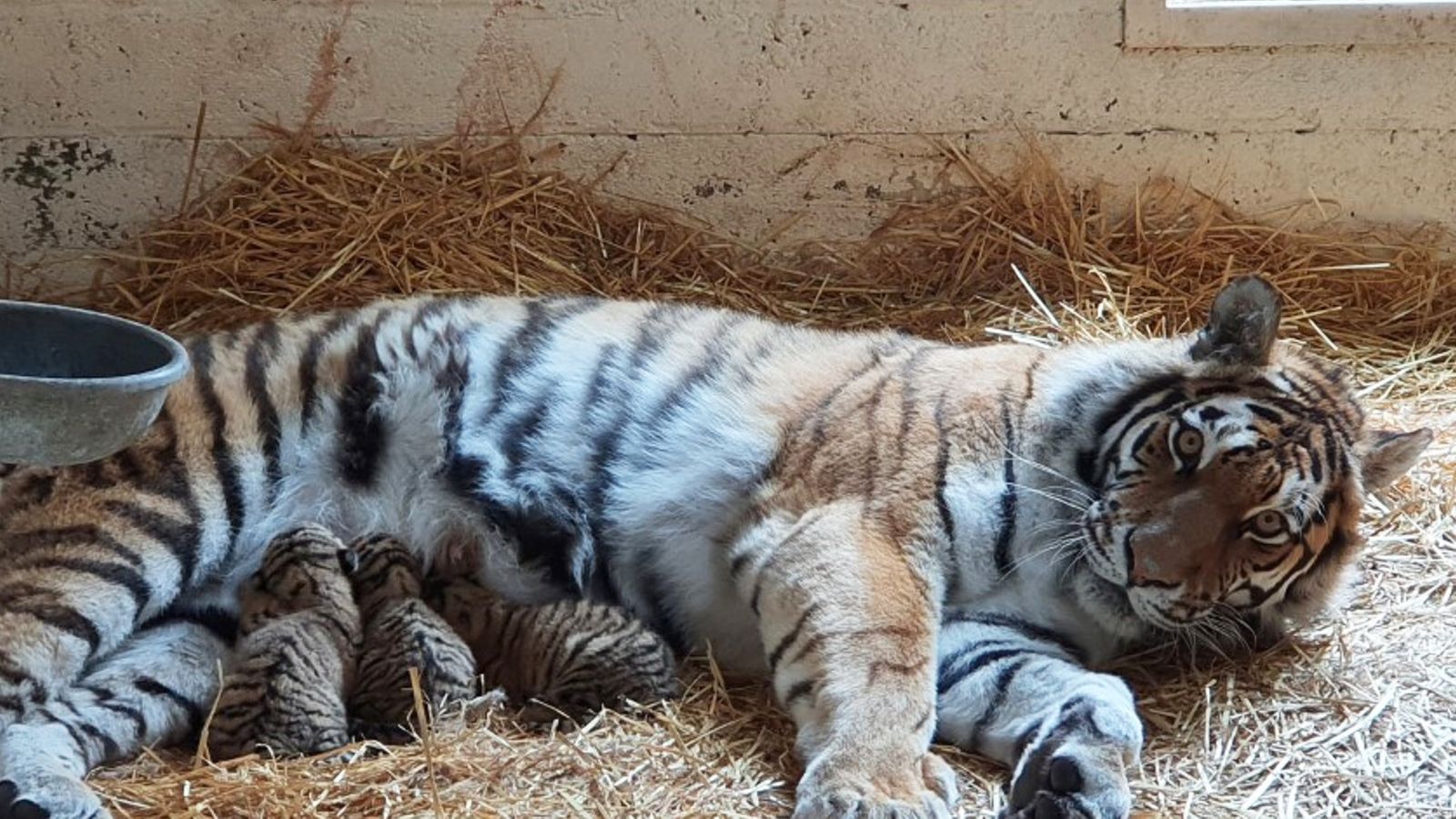Three endangered Amur tiger cubs have been born at a wildlife park in Scotland.
They were born on 18 May and are doing well, but staff at the Royal Zoological Society of Scotland‘s Highland Wildlife Park remain cautious at this early stage.
The triplets are being nursed by mother Dominika, away from the public eye and their father, Botzman, who will be slowly introduced to the cubs as they grow older.
Vickie Larkin, carnivore team leader at the park, said: “The first few weeks of a cub’s life are crucial, so we are keeping public viewing closed for now to give Dominika and the youngsters lots of peace and quiet.
“The cubs’ eyes will start to open any day now and in the coming weeks, they will be weighed, sexed and named.
“Dominika is a very attentive mother and it is beautiful to see her given the chance to display these natural behaviours again.”
Ms Larkin added that the tigers, previously known as Siberian tigers, grow quickly – increasing almost four times in size within the first month of their life. But they will remain dependent on their mother for at least 15 months.
Dominika was also born at the park back in 2009 and was paired with Marty in 2012. Marty and Dominika birthed two cubs, Murray and Vicktor, a year later.
Marty died in 2019 and Botzman arrived from a wildlife park in Bedfordshire last year. Before moving to Scotland, Botzman, who was born in Moscow, fathered three cubs at Whipsnade Zoo in 2018.
Amur tigers are the largest of all big cats and were renamed in the 90s after they disappeared from Siberia. In the wild, they are now only found in isolated populations around the Amur river valley in eastern Russia and on China‘s northeast border.
It is estimated that there are only around 450 Amur tigers remaining in the wild and they remain endangered due to habitat loss and poaching.
But the Amur tiger breeds fairly readily in captivity, with the bulk of the managed population in European and North American zoos.
At the start of the last decade, wild big cat populations were at an all-time low – with as few as 3,2000 remaining across the 13 countries where they are found.
But last year, conservationists said tigers had made a “remarkable comeback” in Bhutan, China, India, Nepal and Russia, a decade after an ambitious WWF project to double tiger populations was launched.
The TX2 initiative aims to double the number of tigers in the wild by 2022, the next Chinese Year of the Tiger.






















